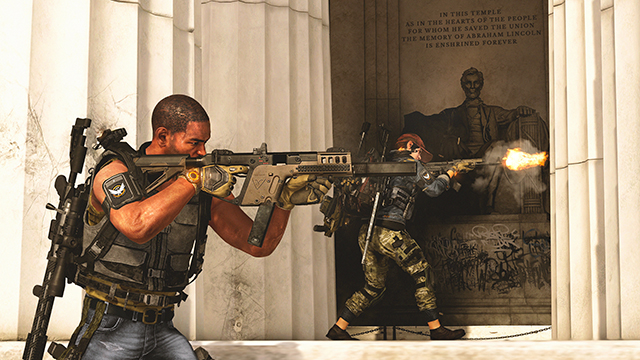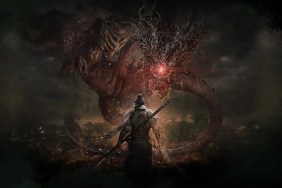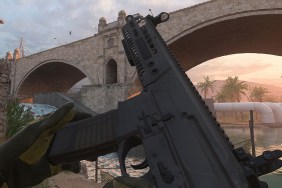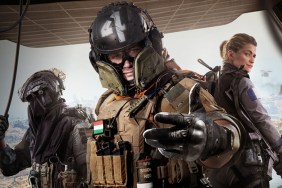The Division 2 beta begins today and is probably similar to what we played last week. It definitely seemed like more focus went into the endgame content, which is just one of the topics we touched on with Lead Gameplay Designer Keith Evans. Evans not only spoke about the team’s big focus on post-game content but the game’s politics (or lack thereof), open world, side missions, and more.
Game Revolution: How is the team prepared to satisfy the demand of the most hardcore people who are going to rush to the level in a matter of days? And what systems do you have in place to make sure people are constantly progressing?
Keith Evans: In general terms, I think we all agree that our endgame in the first one was light when we shipped it. And then we had all of these years of post-launch content where we really filled out and we have one of the fuller endgames out there for this type of game. It offered a lot of different things.
Now we have this nice spot where we can look at what we did the first time and see what the community responded to and bring that into this game at launch. And so the endgame from the beginning was a focus of taking all the content that we are introducing in players in [levels] one through 30, but then evolving it substantially once you get into endgame and adding more activities.
So things like the Dark Zone being this fairer experience. We’ve added this thing called “normalization” into it, split it into separate zones, and we tried to make it a more inviting place to go while still keeping the tension. But then you hit endgame and we’ve really flip it and twist it into Occupy Zones which take off the normalization. All of the aspects of the game have that layer of change to it. So the missions start evolving into Hard and Challenge modes. The biggest thing is, at its core, the living worlds system is a living simulation.
In practice what that does is for the player is, even when they hit endgame, you’re not wiping out the open world. The open world doesn’t become something you’ve exhausted because the world keeps evolving. The factions have their needs, the civilians have their needs and every time you log in, you’ll want to actually walk through the world and explore it because it is giving you new activities to do. And I think that’s the thing that caters to the hardcore players who are going out and taking on the hardest level challenges like the control points but also the casual players who just want to jump in and do 20-minute session and take on a faction fight that was just sort of presented to them.
GR: So is the “needs” systems is like if your crew is hungry and roaming around getting apples?
KE: Yeah, absolutely. And that system is an actual simulation on the world. So you’ll be in a mission and be in a mega map and see things dynamically happening in the world. It’s not just random events. It’s an actual simulation running. So like if this settlement over here has too much water and so they’re gonna trade it with another settlement over on the other end of the world. Those civilians actually have to travel through the world and take it to the other one. So they might just caught midway by the Hyenas coming from their stronghold so that breaks into a huge fight.
Or you’ve gone and taken over a Control Zone in a hospital to get medicine and the Hyenas need medicine so they come in and take it back from you. So there is this constant push and pull to the open world that impacts everything.
GR: It reminds me of Assassin’s Creed Origins where everyone had needs to sleep or work.
KE: It makes the world feel more alive and I think that is a huge change from The Division to The Division 2.
GR: The first game’s side missions were a bit lackluster in the first game. How are you stepping it up in The Division 2?
KE: Our playtime through the campaign is running at around 40 hours which is really cool. And that’s because of that living world stuff that comes in where I’m not just beelining from mission to mission. I have activities filling my time in between.
But our side missions in the first game, in general, you were doing the same things more often. This time, the side missions are a little more integrated into the world and have a little bit more smaller stories to tell. The main thing is that it feels fresher and there are really nice infusions of variability as you play through the main campaign.
GR: Can you give me an example?
KE: Yeah. In the first game, a lot of the side missions were you going in and delivering a specific task. Now there are NPCs tied to a lot of the side missions and they’re presented to you through your gameplay and it has more of that RPG feel of the worlds telling you a story.
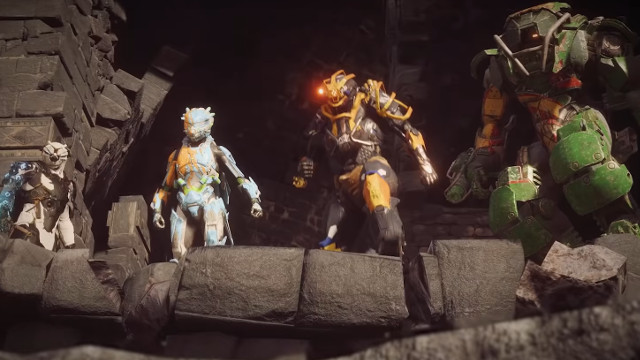
GR: So this a loot shooter and that genre is going to get more crowded with Anthem and then, of course, Destiny 2 is still going…
KE: And we’re big fans of both!
GR: So how do you compete with both of that?
KE: I think to a certain extent, we welcome all of this competition because Anthem looks awesome and a lot of us our huge Destiny fans. For us, we’re able to compete because we are the same team that built the first game, the same team that ran it post-launch and we’ve learned so much. So instead of having to built everything from scratch, we are able to learn so much from the community wanted and what we wanted. And so we are able to have a huge game at launch.
I think we are going to have the biggest offering that this type of game has had out of the gate.
And we are releasing all of our post-launch content for free. So instead of having to segment the community into chunks like we did the first time with paid DLC, now we are bringing the community along for the ride. We’re going to have named zone expansions, additional missions, expansions, and game modes for the conflict PVP and we’ll just kind of keep drip feeding to players. And it all kicks off with the raid which will come out just after launch.
GR: How have you all learned from games like Destiny and other games like that? Or are you just strictly keeping your heads down and looking at what you did last time?
KE: We’re all huge gamers so we play a lot of stuff and there are influences from everywhere. There’s just a lot of talented people making great stuff. But for us, it’s a lot of us having a really open conversation with our community over the last three years like bringing in a lot of people from the community. A lot of us are super engaged with the forums and Twitter. For us, it’s nice to be able to look at specifically what connected with our community and what are their needs and what can we do better?
And that’s what the endgame being a big focus all throughout development came from. Because we know that‘s what people are hungry for.
Go on the next page to see how the team is handling The Division 2’s extensive roadmap, why the game is set in Washington D.C., the lack of politics behind that decision, and more.
GR: Your roadmap seems pretty flexible in a way that could be easily shaped by the community.
KE: Yeah. I mean, we have our plans and roadmap, the three episodes and post-launch, but we are leaving room to have that conversation to adapt and have health patches in between major updates. It’s just to keep the game fresh.
And we’ve had a lot changes in general to make sure that the game stays in a really good spot once we ship. For instance, the way we’re balancing PVP this time, which is a huge part of our game, is it’s not just this direct link between trying to perfectly balance between PVE loot gain, which is about giving the player more power, and a fair PVP. Now, we have this layer of normalization on top of everything and, on top of that, we can go in and fine tune talents and skills differently when you’re playing a normalized mode but still keep all that power in PVE and those are things that the community has really been begging for.
GR: Some of the DLC was paid in the first game. Now it’s free. How did you make the argument to keep free DLC in this game?
KE: Yeah, it’s making a big commitment from Ubisoft, honestly, to keep the game healthy and make it a long-term thing. There’s a lot of up front investment in something like that. But we’re pretty positive that when you look at the first three years, we had the paid DLC throughout the first year and we added a lot of really cool stuff. But only this smaller group of the community got the play it and then as we went into Year 2, we went about adding a new named zone and organized PVP and a really huge Horde mode and all this stuff that now the community could get excited about it. And that does a lot more to keep the playerbase super happy and engaged and that’s what we really want to do.
GR: So why choose Washington D.C.?
KE: There were a lot of reasons. As we left Manhattan, that game was all about recreating the city as close as possible and taking back New York. That was the tagline for that game. We knew we wanted to ratchet that up for the sequel. And we also wanted a world that was much more diverse.
In New York, we had two big biomes: the commercial area and the office buildings. So we wanted to push into a zone that offered us a lot more variability in the environment and D.C. brings that in a huge way. We now have total nature biomes that, all of a sudden, we’ve added terrain to engine. So now you’re on undulating terrain and taking cover on downed trees and we’ve added circular cover. And we’ve had to adapt to AI to work in these large 360 [degree] environments where they are much smarter and flanking. And those are things we wanted to push for in the sequel.
And then there’s the natural extension of the first game where we were taking back the city and we knew the story was going to continue. We knew that the epidemic had wiped out a huge portion of America and we wanted to raise the stakes and have you actually take back the nation.
GR: Part of the tagline for the game is “Take back the country” and that gives this a different lens with everything going on now in the real world. And setting it in Washington D.C. is saying something. It’s not like it is in Pittsburgh or something.
KE: The idea is very much centered on the logical place that this story would go. If you’re in New York and you’ve managed to barely hold on and you see the rest of the country falling, where is the seat of power in the United States? Where do you have to hold for the whole country not to fall? And that, to me, is outside of any current events because, given the story and the world we’ve created, is the next logical step.
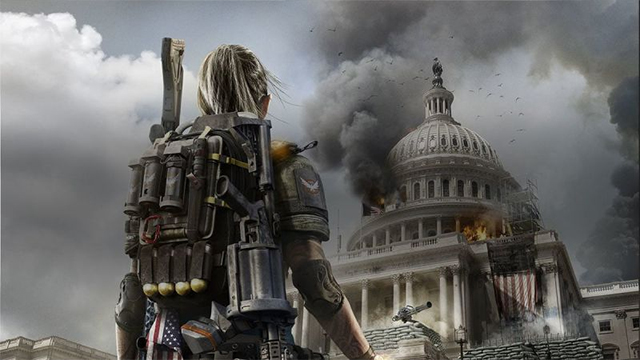
GR: I think because a lot of people could see this [the damaged Capitol Building on fire] as a metaphor especially coming off after a government shutdown. That imagery is pretty loaded.
KE: Yeah, we’ve been working on it for three years. I also think there is something to be said about it being a work of art. Art is always there to add to conversation. We know that people are going to play the game and have their own opinions on it. We don’t want to dictate that exactly for them. We want people to play it and take it in and form their own opinions and add to this conversation of what all art is adding to.
GR: So you’re saying that you’re not saying something specifically, you want people to play it and take something away from it?
KE: Yeah, we’re creating a Tom Clancy scenario, “Clear and Present Danger,” all that type of stuff that logically fits in our world and is where we wanted to take the story from the beginning.
GR: I’m just scared that people are going to see “Take back the country” and stuff like that and if you say that to 20 different people, you might get some bad responses. I guess you’re saying that’s just part of it being art.
KE: Yeah, exactly.
